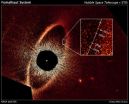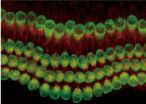MUNICH, GERMANY, January 10, 2013 (Press-News.org) MBA Rankings are used to assess the quality of programs and schools. Depending on the publisher, however, rankings follow different methodologies. The platform Master of Business Administration Compass explored internationally recognized full-time MBA rankings from Businessweek, Financial Times, Economist, Forbes, and US News using three dimensions:
Ranking criteria: Which topics are covered by the ranking?
Sources of information: Who provides the information?
Influence: Which groups and topics are given the highest weighting and have greatest impact on the ranking?
The results show that external people who are not directly associated with a specific program - corporate recruiters, deans and directors - have the greatest impact in the Businessweek and US News rankings. MBA alumni have the greatest impact in the Forbes and the Financial Times rankings. Business schools dominate the Economist ranking.
All five rankings include career-related questions, but only Forbes and Financial Times strongly emphasize the future salary (weighted by 100% and 40% respectively). Forbes assesses the salary five years after graduation and hence seems to best capture the long-term career impact. Financial Times publishes the future salary after transforming the different currencies into US Dollars according to the Purchasing Power Parity Rates (PPP Rates) and excluding full-time jobs in non-profit or education organizations. Two rankings - Financial Times and Businessweek - also include a business school's research capability in the ranking.
Please find the complete article at www.mba-compass.com/Knowledge-MBA-COMPASS/Global-MBA-Ranking-Comparis ... n-Rankings.
The new website Master of Business Administration Compass is a platform for the Master of Business Administration. It provides background information on the MBA and individual advice on finding the right MBA program. The MBA Compass belongs to the Master in Management Compass and the Doctor of Business Administration Compass family.
Who and What Drives MBA Rankings? MBA Compass Compares Businessweek, Financial Times, Economist, Forbes, and US News
Results show: External people such as corporate recruiters, deans and directors have the greatest impact in the Businessweek and US News rankings.
2013-01-10
ELSE PRESS RELEASES FROM THIS DATE:
NASA's Hubble reveals rogue planetary orbit for Fomalhaut B
2013-01-09
Newly released NASA Hubble Space Telescope images of a vast debris disk encircling the nearby star Fomalhaut and a mysterious planet circling it may provide forensic evidence of a titanic planetary disruption in the system.
Astronomers are surprised to find the debris belt is wider than previously known, spanning a section of space from 14 to nearly 20 billion miles from the star. Even more surprisingly, the latest Hubble images have allowed a team of astronomers to calculate the planet follows an unusual elliptical orbit that carries it on a potentially destructive ...
Nursing gerbils unravel benefit of multiple mothers in collective mammals
2013-01-09
In mammals such as rodents that raise their young as a group, infants will nurse from their mother as well as other females, a dynamic known as allosuckling. Ecologists have long hypothesized that allosuckling lets newborns stockpile antibodies to various diseases, but the experimental proof has been lacking until now.
An in-press report in the journal Mammalian Biology found that infant Mongolian gerbils that suckled from females given separate vaccines for two different diseases wound up with antibodies for both illnesses.
The findings not only demonstrate the potential ...
Scientists peer into a brown dwarf, find stormy atmosphere
2013-01-09
A University of Arizona-led team of astronomers for the first time has used NASA's Spitzer and Hubble space telescopes simultaneously to peer into the stormy atmosphere of a brown dwarf, creating the most detailed "weather map" yet for this class of strange, not-quite-star-and-not-quite-planet objects. The forecast shows wind-driven, planet-sized clouds enshrouding these strange worlds.
Brown dwarfs form out of condensing gas like stars but fail to accrue enough mass to ignite the nuclear fusion process necessary to turn them into a star. Instead, they pass their lives ...
Asteroid belt found around Vega
2013-01-09
Vega, the second brightest star in northern night skies, has an asteroid belt much like our sun, discovered by a University of Arizona-lead team of astronomers. A wide gap between the dust belts in nearby bright stars is a strong hint of yet-undiscovered planets orbiting the stars.
The findings from the Infrared Space Telescopes are the first to show an asteroid-like belt ringing Vega. The discovery of an asteroid belt around Vega makes it more similar to its twin, a star called Fomalhaut, than previously known. Both stars now are known to have inner, warm asteroid belts ...
JCI early table of contents for Jan. 9, 2013
2013-01-09
Small peptide ameliorates autoimmune skin blistering disease in mice
Pemphigus vulgaris is a life-threatening autoimmune skin disease that is occurs when the body's immune system generates antibodies that target proteins in the skin known as desomogleins. Desmogleins help to form the adhesive bonds that hold skin cells together and keep the skin intact. Currently, pemphigus vulgaris is treated by long-term immune suppression; however, this can leave the patient susceptible to infection. In this issue of the Journal of Clinical Investigation, researchers led by Jens Waschke ...
Small peptide ameliorates autoimmune skin blistering disease in mice
2013-01-09
Pemphigus vulgaris is a life-threatening autoimmune skin disease that is occurs when the body's immune system generates antibodies that target proteins in the skin known as desomogleins. Desmogleins help to form the adhesive bonds that hold skin cells together and keep the skin intact. Currently, pemphigus vulgaris is treated by long-term immune suppression; however, this can leave the patient susceptible to infection. In this issue of the Journal of Clinical Investigation, researchers led by Jens Waschke at the Institute of Anatomy and Cell Biology in Munich, Germany, ...
Newly found 'volume control' in the brain promotes learning, memory
2013-01-09
WASHINGTON — Scientists have long wondered how nerve cell activity in the brain's hippocampus, the epicenter for learning and memory, is controlled — too much synaptic communication between neurons can trigger a seizure, and too little impairs information processing, promoting neurodegeneration. Researchers at Georgetown University Medical Center say they now have an answer. In the January 10 issue of Neuron, they report that synapses that link two different groups of nerve cells in the hippocampus serve as a kind of "volume control," keeping neuronal activity throughout ...
A new treatment for kidney disease-associated heart failure?
2013-01-09
Chronic kidney disease (CKD) patients frequently suffer from mineral bone disorder, which causes vascular calcification and, eventually, chronic heart failure. Similar to patients with CKD, mice with low levels of the protein klotho (klotho hypomorphic mice) also develop vascular calcification and have shorter life spans compared to normal mice. In this issue of the Journal of Clinical Investigation, Florian Lang and colleagues at the University of Tübingen in Germany, found that treatment with the mineralocorticoid receptor antagonist spironolactone reduced vascular calcification ...
Fusion gene contributes to glioblastoma progression
2013-01-09
Fusion genes are common chromosomal aberrations in many cancers, and can be used as prognostic markers and drug targets in clinical practice. In this issue of the Journal of Clinical Investigation, researchers led by Matti Annala at Tampere University of Technology in Finland identified a fusion between the FGFR3 and TACC3 genes in human glioblastoma samples. The protein produced by this fusion gene promoted tumor growth and progression in a mouse model of glioblastoma, while increased expression of either of the normal genes did not alter tumor progression. Ivan Babic ...
Regeneration of sound sensing cells recovers hearing in mice with noise-induced deafness
2013-01-09
Extremely loud noise can cause irreversible hearing loss by damaging sound sensing cells in the inner ear that are not replaced. But researchers reporting in the January 9 issue of the Cell Press journal Neuron have successfully regenerated these cells in mice with noise-induced deafness, partially reversing their hearing loss. The investigators hope the technique may lead to development of treatments to help individuals who suffer from acute hearing loss.
While birds and fish are capable of regenerating sound sensing hair cells in the inner ear, mammals are not. Scientists ...
LAST 30 PRESS RELEASES:
Chicago health information leader recognized for raising CPR readiness and blood pressure awareness
The Intimate Animal, a new book from Kinsey Institute Executive Director Dr. Justin Garcia
When blue-collar workers lose union protection, they try self-employment
New video dataset to advance AI for health care
MEA-based graph deviation network for early autism syndrome signatures in human forebrain organoids
New modeling approach sheds light on rare gut disease
Study documents potentially hazardous flame retardants in firefighter gear
Can certain bacteria regulate aging of the immune system and its related alterations?
AI model helps diagnose often undetected heart disease from simple EKG
There are fewer online trolls than people think
Cell membrane fluctuations produce electricity
Jeonbuk National University study shows positive parenting can protect adolescents against self-harm
Surface-engineered ZnO nanocrystals to tackle perfluoroalkyl substance contamination
This new understanding of T cell receptors may improve cancer immunotherapies
A new fossil face sheds light on early migrations of ancient human ancestor
A new immunotherapy approach could work for many types of cancer
A new way to diagnose deadly lung infections and save lives
40 percent of MRI signals do not correspond to actual brain activity
How brain-inspired algorithms could drive down AI energy costs
Gum disease may be linked to plaque buildup in arteries, higher risk of major CVD events
Contrails are a major driver of aviation’s climate impact
Structure of dopamine-releasing neurons relates to the type of circuits they form for smell-processing
Reducing social isolation protects the brain in later life
Keeping the heart healthy increases longevity even after cancer
Young adults commonly mix cannabis with nicotine and tobacco
Comprehensive review illuminates tau protein's dual nature in brain health, disease, and emerging psychiatric connections
Book prepares K-12 leaders for the next public health crisis
Storms in the Southern Ocean mitigates global warming
Seals on the move: Research reveals key data for offshore development and international ecology
Sports injuries sustained during your period might be more severe
[Press-News.org] Who and What Drives MBA Rankings? MBA Compass Compares Businessweek, Financial Times, Economist, Forbes, and US NewsResults show: External people such as corporate recruiters, deans and directors have the greatest impact in the Businessweek and US News rankings.

